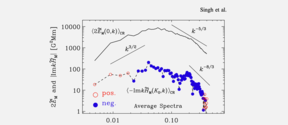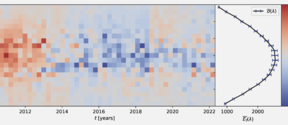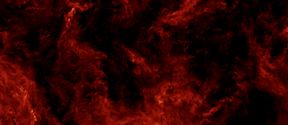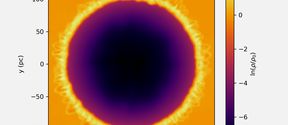High-performance computing Lab (HPCLab)
Our research group develops and utilises high-performance and data intensive computing (HPC) methods and applications for heterogeneous NUMA-architectures.
Our spearhead area is astroinformatics, namely methods and tools for simulating and analysing data from complex (astro)physical systems, such as turbulent fluids, the Sun, and interstellar matter in galaxies. The developed methods include simulation tools accelerated with graphics processing units, and data-analysis tools employing machine learning. Our current projects aim at understanding, predicting, and mitigating the harmful effects from solar magnetic activity (ERC consolidator grant UniSDyn, ERC proof-of-concept grant SYCOS, Inno4Scale project NEOSC).
Our spearhead area is astroinformatics, namely methods and tools for simulating and analysing data from complex (astro)physical systems, such as turbulent fluids, the Sun, and interstellar matter in galaxies. The developed methods include simulation tools accelerated with graphics processing units, and data-analysis tools employing machine learning. Our current projects aim at understanding, predicting, and mitigating the harmful effects from solar magnetic activity (ERC consolidator grant UniSDyn, ERC proof-of-concept grant SYCOS, Inno4Scale project NEOSC).

News
HPCLab research group news

Evidence of turbulent dynamo action in the Sun
Astroinformatics research group has determined magnetic helicity spectrum from the solar surface observations using the recently developed two-scale formalism.
Surface gravity oscillation mode shows remarkable solar cycle dependence
12 years of satellite data was used to reveal an enigmatic behaviour of the surface-gravity wave energy contained in the most quiet regions on solar surface.
LUMI-G pilot
VISSI-project was selected as LUMI-G pilot
Dust destruction in Supernova blast waves
A supernova explosion blasts hot supersonic plasma, destroying more interstellar dust in its path than fits current theory or observations of dust abundances in early galaxies.People

Latest publications
Euclid preparation LXXIII. Spatially resolved stellar populations of local galaxies with Euclid : A proof of concept using synthetic images with the TNG50 simulation
C. Tortora, M. Baes, A. Nersesian, I. Kovačić, M. Bolzonella, A. Lançon, L. Bisigello, F. Annibali, M. N. Bremer, D. Carollo, C. J. Conselice, A. Enia, A. M.N. Ferguson, A. Ferré-Mateu, L. K. Hunt, E. Iodice, J. H. Knapen, A. Iovino, F. R. Marleau, R. F. Peletier, R. Ragusa, M. Rejkuba, A. S.G. Robotham, J. Román, T. Saifollahi, P. Salucci, M. Scodeggio, M. Siudek, A. van der Wel, K. Voggel, B. Altieri, S. Andreon, C. Baccigalupi, M. Baldi, S. Bardelli, A. Biviano, A. Bonchi, D. Bonino, E. Branchini, M. Brescia, J. Brinchmann, S. M. Niemi, P. Schneider, Y. Wang, M. Calabrese, G. Gozaliasl, A. Hall, J. Hjorth, S. Lee
2025
Astronomy and Astrophysics
COSMOS-Web: Estimating Physical Parameters of Galaxies Using Self-Organizing Maps
Fatemeh Abedini, Ghassem Gozaliasl, Akram Hasani Zonoozi, Atousa Kalantari, Maarit Korpi-Lagg, Olivier Ilbert, Hollis Akins, Natalie Allen, Rafael Arango-Toro, Caitlin Casey, Nicole Drakos, Andreas Faisst, Carter Flayhart, Maximilien Franco, Hosein Haghi, Santosh Harish, Hossein Hatamnia, Jeyhan Kartaltepe, Ali Khostovan, Anton Koekemoer, Vasily Kokorev, Rebecca Larson, Gavin Leroy, Daizhong Liu, Henry McCracken, Jed McKinney, Nicolas McMahon, Wilfried Mercier, Bahram Mobasher, Sophie Newman, Louise Paquereau, Jason Rhodes, Brant Robertson, Marko Shuntov, Sina Taamoli, Sune Toft, Francesco Valentino, Eleni Vardoulaki, John Weaver
2025
arXiv.org
COSMOS-web : The Overabundance and Physical Nature of “Little Red Dots”—Implications for Early Galaxy and SMBH Assembly
Hollis B. Akins, Caitlin M. Casey, Erini Lambrides, Natalie Allen, Irham T. Andika, Malte Brinch, Jaclyn B. Champagne, Olivia Cooper, Xuheng Ding, Nicole E. Drakos, Andreas Faisst, Steven L. Finkelstein, Maximilien Franco, Seiji Fujimoto, Fabrizio Gentile, Steven Gillman, Ghassem Gozaliasl, Santosh Harish, Christopher C. Hayward, Michaela Hirschmann, Olivier Ilbert, Jeyhan S. Kartaltepe, Dale D. Kocevski, Anton M. Koekemoer, Vasily Kokorev, Daizhong Liu, Arianna S. Long, Henry Joy McCracken, Jed McKinney, Masafusa Onoue, Louise Paquereau, Alvio Renzini, Jason Rhodes, Brant E. Robertson, Marko Shuntov, John D. Silverman, Takumi S. Tanaka, Sune Toft, Benny Trakhtenbrot, Francesco Valentino, Jorge Zavala
2025
Astrophysical Journal
Euclid preparation LXXIV. Euclidised observations of Hubble Frontier Fields and CLASH galaxy clusters
P. Bergamini, M. Meneghetti, G. Angora, L. Bazzanini, P. Rosati, C. Grillo, M. Lombardi, D. Abriola, A. Mercurio, F. Calura, G. Despali, J. M. Diego, R. Gavazzi, P. Hudelot, L. Leuzzi, G. Mahler, E. Merlin, C. Scarlata, N. Aghanim, B. Altieri, A. Amara, S. Andreon, N. Auricchio, C. Baccigalupi, M. Baldi, S. Bardelli, R. Bender, C. Bodendorf, D. Bonino, E. Branchini, M. Brescia, J. Brinchmann, S. Camera, V. Capobianco, C. Carbone, J. Carretero, S. Casas, F. J. Castander, M. Castellano, G. Castignani, S. Cavuoti, A. Cimatti, S. M. Niemi, A. G. Sánchez, P. Schneider, Y. Wang, M. Calabrese, G. Gozaliasl, A. Hall, J. Hjorth
2025
Astronomy and Astrophysics
Brightest group galaxies in COSMOS-Web : Evolution of the size-mass relation since z = 3.7
Ghassem Gozaliasl, Lilan Yang, Jeyhan S. Kartaltepe, Greta Toni, Fatemeh Abedini, Hollis B. Akins, Natalie Allen, Rafael C. Arango-Toro, Arif Babul, Caitlin M. Casey, Nima Chartab, Nicole E. Drakos, Andreas L. Faisst, Alexis Finoguenov, Carter Flayhart, Maximilien Franco, Zohreh Ghaffari, Gavin Leroy, Aryana Haghjoo, Hosein Haghi, Santosh Harish, Akram Hasani Zonoozi, Günther Hasinger, Hossein Hatamnia, Olivier Ilbert, Shuowen Jin, Darshan Kakkad, Atousa Kalantari, Ali Ahmad Khostovan, Anton M. Koekemoer, Maarit Korpi-Lagg, Clotilde Laigle, Daizhong Liu, Georgios Magdis, Matteo Maturi, Henry Joy Mccracken, Jed Mckinney, Nicolas Mcmahon, Wilfried Mercier, Bahram Mobasher, Lauro Moscardini, Jason Rhodes, Brant E. Robertson, Louise Paquereau, Annagrazia Puglisi, Rasha M. Samir, Sogol Sanjaripour, Zahra Sattari, Diana Scognamiglio
2025
Astronomy and Astrophysics
COSMOS Web: Morphological quenching and size-mass evolution of brightest group galaxies from z = 3.7
Ghassem Gozaliasl, Lilan Yang, Jeyhan Kartaltepe, Greta Toni, Fatemeh Abedini, Hollis Akins, Natalie Allen, Rafael Arango-Toro, Arif Babul, Caitlin Casey, Nima Chartab, Nicole Drakos, Andreas Faisst, Alexis Finoguenov, Carter Flayhart, Maximilien Franco, Gavin Leroy, Santosh Harish, Günther Hasinger, Hossein Hatamnia, Olivier Ilbert, Shuowen Jin, Darshan Kakkad, Atousa Kalantari, Ali Ahmad Khostovan, Anton Koekemoer, Maarit Korpi-Lagg, Clotilde Laigle, Daizhong Liu, Georgios Magdis, Matteo Maturi, Henry Joy McCracken, Jed McKinney, Nicolas McMahon, Bahram Mobasher, Lauro Moscardini, Jason Rhodes, Brant Robertson, Louise Paquereau, Annagrazia Puglisi, Rasha Samir, Mark Sargent, Zahra Sattari, Diana Scognamiglio, Nick Scoville, Marko Shuntov, David Sanders, Sina Taamoli, Sune Toft, Eleni Vardoulaki
2025
arXiv.org
COSMOS-Web : MIRI Data Reduction and Number Counts at 7.7 μm Using JWST
Santosh Harish, Jeyhan S. Kartaltepe, Daizhong Liu, Anton M. Koekemoer, Caitlin M. Casey, Maximilien Franco, Hollis B. Akins, Olivier Ilbert, Marko Shuntov, Nicole E. Drakos, Mike Engesser, Andreas L. Faisst, Ghassem Gozaliasl, Crystal L. Martin, Michaela Hirschmann, Vasily Kokorev, Erini Lambrides, Henry Joy McCracken, Jed McKinney, Louise Paquereau, Jason Rhodes, Brant E. Robertson
2025
Astrophysical Journal
The COSMOS-Web Lens Survey(COWLS) III : forecasts versus data
Natalie B. Hogg, James W. Nightingale, Quihan He, Jacqueline McCleary, Guillaume Mahler, Aristeidis Amvrosiadis, Ghassem Gozaliasl, Edward Berman, Richard J. Massey, Diana Scognamiglio, Maximilien Franco, Daizhong Liu, Marko Shuntov, Louise Paquereau, Olivier Ilbert, Natalie Allen, Sune Toft, Hollis B. Akins, Caitlin M. Casey, Jeyhan S. Kartaltepe, Anton M. Koekemoer, Henry Joy McCracken, Jason D. Rhodes, Brant E. Robertson, Nicole E. Drakos, Andreas L. Faisst, Hossein Hatamnia, Sophie L. Newman
2025
Monthly Notices of the Royal Astronomical Society
Euclid preparation LXXV. Estimating galaxy physical properties using CatBoost chained regressors with attention
A. Humphrey, P. A.C. Cunha, L. Bisigello, C. Tortora, M. Bolzonella, L. Pozzetti, M. Baes, B. R. Granett, A. Amara, S. Andreon, N. Auricchio, C. Baccigalupi, M. Baldi, S. Bardelli, C. Bodendorf, D. Bonino, E. Branchini, M. Brescia, J. Brinchmann, S. Camera, V. Capobianco, C. Carbone, J. Carretero, S. Casas, M. Castellano, G. Castignani, S. Cavuoti, A. Cimatti, C. Colodro-Conde, G. Congedo, C. J. Conselice, L. Conversi, Y. Copin, F. Courbin, H. M. Courtois, A. Da Silva, H. Degaudenzi, G. De Lucia, J. Dinis, F. Dubath, X. Dupac, S. Dusini, S. M. Niemi, A. G. Sánchez, P. Schneider, Y. Wang, M. Calabrese, G. Gozaliasl, A. Hall, J. Hjorth
2025
Astronomy and Astrophysics
The COSMOS-Web Lens Survey (COWLS) II : Depth, resolution, and NIR coverage from JWST reveals 17 spectacular lenses
Guillaume Mahler, James W. Nightingale, Natalie B. Hogg, Ghassem Gozaliasl, Jacqueline McCleary, Qiuhan He, Edward Berman, Maximilien Franco, Daizhong Liu, Richard J. Massey, Wilfried Mercier, Diana Scognamiglio, Marko Shuntov, Maximilian Von Wietersheim-Kramsta, Louise Paquereau, Olivier Ilbert, Natalie Allen, Sune Toft, Hollis B. Akins, Caitlin M. Casey, Jeyhan S. Kartaltepe, Anton M. Koekemoer, Henry Joy McCracken, Jason D. Rhodes, Brant E. Robertson, Jorge A. Zavala, Nicole E. Drakos, Andreas L. Faisst, Georgios E. Magdis, Shuowen Jin
2025
Monthly Notices of the Royal Astronomical Society: Letters






